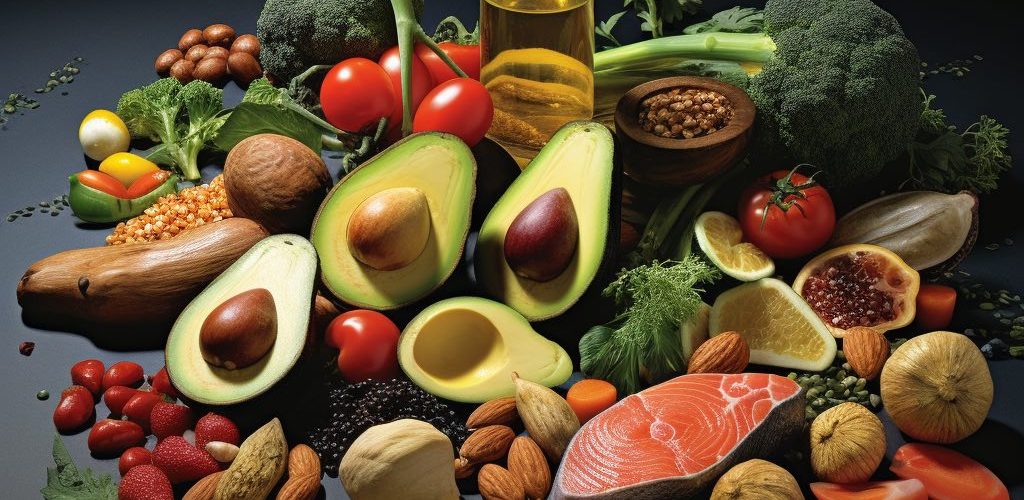
We have covered throughout this program about the role of fats and the importance of getting essential fatty acids. We have also highlighted the dynamic whereby you can actually consume excessive amounts of fat and the issues that this can present in terms of overworking your digestive organs as well as slowing down your lymphatic system in its cleansing and detoxification efforts.
There is also something else to be considered, which would be — what kind of fatty acids are ideally consumed? Most of the fats out there which are commonly consumed in the modern diet or even a healthy lifestyle are especially high in Omega 6 fatty acids, while not containing very many Omega 3 fatty acids. This can cause issues for what is going on inside of your body. If an individual consumes too much Omega 6s and not enough Omega 3s, then they run the risk of not being able to control or alleviate issues with inflammation.
Omega 3s are anti-inflammatory, while Omega 6s are more pro-inflammatory, to put it quite simply. The body needs both essential fatty acids in order to create inflammation (definitely needed for certain bodily responses) as well as remediate and dial back inflammation when appropriate, among many other functions that help out the body. When too much Omega 6s are consumed and not enough Omega 3s, this can put the body in a precarious state of imbalance in terms of handling inflammatory responsibilities and can even risk causing an excess of inflammation in the body whenever there are too many Omega 6s being consumed and not enough Omega 3s.
What if you eat sufficient Omega 3s, but also eat a huge amount of Omega 6s on top of that? The same enzyme breaks down both of these essential fatty acids, and so some of the Omega 3s can possibly end up going to waste because this enzyme does not exist in infinite amounts and would be overly used in breaking down the Omega 6s.
Looking around at most of the human population, it seems that most people could use more assistance with relief from inflammation, and don’t need extra help to cause additional inflammation. It’s only common horse sense to realize that the consumption of Omega 6s could be causing an imbalance in the general public. Examining closer the foods which are available, and you can see that so many foods have excessive amounts of Omega 6s. As a result, Americans as an example are consuming anywhere from 10 to 20 times as much Omega 6s compared with Omega 3s — so the ratio is 10:1 or 20:1.
What is the perfect balance? I’m not sure exactly, but based on my research it seems like a 1:1 ratio is close to ideal, and this makes intuitive sense to me in the course of seeking out a natural balance inside our bodies. Some other more mainstream people in the scientific community will note a 2:1, 3:1 or 4:1 ratio is ideal — but even this is a much lower ratio than is typical of what most people are eating.
So is it easy to eat more Omega 3s and less Omega 6s and how do you do it? There are a few ways to accomplish this goal. It’s not just about adding more Omega 3s, because if you’re still eating excessive amounts of Omega 6s it can imbalance the availability of the needed enzymes for Omega 3 processing. So unfortunately, you not only need to eat more Omega 3s but also you need to not eat as many Omega 6s to effectively achieve this balance.
There are certain foods like fatty fish which are high in Omega 3s — hence the popularity of fish oil supplements. I prefer to consume a source that is plant-based and more clean from chemicals which are widespread in our oceans. An equal mixture of chia seeds and hemp seeds is good for this. Flaxseeds are also high in Omega 3 fatty acids. I will use a small blender/grinder (like a coffee bean grinder) to blend up chia seeds and hemp seeds, and add that mixture to a smoothie, dressing, salad, or big bowl of fruit. You can also eat it a La Carte sort of like oatmeal perhaps with a little bit of lemon or lime juice.
When I discovered this technique, I had been eating a lot of avocados and was feeling like I was hitting a plateau in terms of my overall vibrance and my energy levels. I intuitively knew that it was because of how much avocado I was eating, and yet, I didn’t know what to do because I felt a major craving for fat that I needed to satisfy. After I made this switch, I felt a major boost in my overall energy levels, both in the evenings as well as my waking energy that following morning. I was blown away by the difference this made in my overall dynamic performance through life, and I have kept up this regiment as an essential tool in my toolkit to keep myself young and healthy.
Here is a breakdown of the ratio in different nuts and seeds, in sequence from the best ratios to the worst:
Omega 6:3 Ratio
Flax Seeds
1 / 3.9
Chia Seeds
1 / 3
Hemp Seeds
3.2 / 1
Walnuts
4.2 / 1
Macadamia Nuts
6.6 / 1 (but low in both Omega 6 and Omega 3 fatty acids)
Pecans
20.6 / 1
Pistachios
49 / 1
Sesame Seeds
57 / 1
Hazelnuts
90 / 1
Poppy Seeds
104 / 1
Pumpkin Seeds
114 / 1
Cashews
126 / 1
Pine Nuts
202 / 1
Sunflower Seeds
312 / 1
Brazil Nuts
664 / 1
Almonds
2010 / 1
Omega 6:3 Ratio in other foods for reference:
Spinach
1 / 5.4
Lettuce
1 / 2.4
Zucchini
1 / 1.7
Olives / Olive Oil
10 / 1
Avocados / Avocado Oil
17 / 1
Palm Oil
46 / 1
Grapeseed Oil
696 / 1
Coconuts / Coconut Oil
Infinity / Zero (does contain any Omega 3s)
Nobody is perfect and you can’t be expected to completely abstain from eating certain foods just because their Omega Fatty Acid Ratio is not ideal. But what you can do is use this knowledge to navigate the food aisles and figure out which foods are going to put your body into an ideal state of balance and performance. Even small changes in your daily routing can make a huge difference in how you feel and operate. When I grew my awareness surrounding this topic, it took my level of health and wellness to a new level. Use this information wisely. Please, try it for yourself!
RapidRegeneration.com/SeedGrinder
&
RapidRegeneration.com/ChiaSeeds
&
RapidRegeneration.com/HempSeeds
&
RapidRegeneration.com/FlaxSeeds
